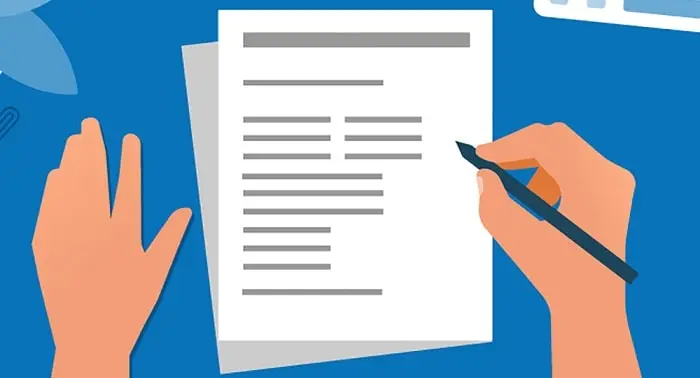A monthly document that is given to employees by their employers is known as a salary slip or as a payslip. An employee’s income and the deductions on it for a certain time period are broken down in great detail on a salary slip. The employees may receive a printed copy of this document or receive a copy via mail. The salary slip format is available for download by employees in PDF format. In addition, as evidence of wage payments to its personnel and deductions made, a business is required by law to issue pay slips on a regular basis.
A salary slip, also known as a pay slip, is a written record that includes precise information about your work as well as an extensive summary of the different components of your compensation. It is sent by an employer each month, either as an electronic copy or a printed hard copy. A pay slip should ideally include the business’s logo in addition to its name and address.
What Elements Make Up a Salary Slip?
Every month, the employer produces a salary statement. Employees can download PDF versions of their pay slips. How many people, though, fully comprehend the format and elements of a wage slip? The difficult-to-understand terminology and numbers resemble a conundrum that no one wants to solve.
Most people only consider the value of a pay slip when they seek a loan or new credit card. Here’s why it’s important to comprehend salary slip format better, nevertheless.
- When looking for new work, make a wise decision from among the available offers.
- maximize tax liability by utilizing all permitted deductions
- Recognize the percentage of the wage that is required to be saved (EPF & ESI)
Basic information like the name of the employer, the person’s name, title, and employee code are found on a wage slip or pay slip. The two main kinds of salary components are income/earnings and deductions.
Importance and Benefits of a Salary Slip
Salary slips are necessary for a number of reasons. The following are a few of the major advantages you receive from them:
1. Your pay slip is used as official documentation of your work.
A salary slip serves as official documentation of your work status, job title, and monthly wage. When you apply for admission to higher education programs at international colleges, they frequently ask you for work information backed up by your monthly pay slips. Since they serve as documentation of your income, salary slips also are important when requesting work permits.
2. A Salary slip helps in job negotiations and search
Some companies may request your wage slips from your prior employer when you’re looking for a new job to verify your position and pay. Based on your present title and pay, salary slips may assist you to bargain for a better position and remuneration with a new employer. Negotiating a salary versus haggling over a price are very different from each other. It is never appropriate to turn a wage discussion with an HR person or even a compensation discussion over the phone into a bargaining session.
Every employee should be aware of how much of a pay package to request, and every employer should be aware of how much to offer. In this process, a salary slip helps.
3. In loan and credit card applications, pay slips are helpful.
The lender or credit card business determines your creditworthiness when you request a loan or a card based on your pay slips from the preceding three to six months. The wage slips show your monthly net take-home earnings and your capacity to make your repayment commitments. The values on your pay slip determine your initial loan & credit card limitations. Many banks and financial institutions only use salaried people’s pay slips to issue personal loans & salary advances.
4. Salary slips help you file income tax returns
Your salary is broken down into specific components on your pay slips, therefore you must obtain the totals for each of these elements for the applicable fiscal year. If your firm offers monthly aggregate statistics, you must use the final pay slip from the previous year (which ends on March 31) to determine your tax obligation. You only need to add up to the monthly figures in order to obtain the annual values if you don’t have integrated figures on a single salary slip. You can determine your tax obligation once you have the yearly numbers for your base pay, HRA, DA, and conveyance allowance. You can subtract the amount of your real expenses for the majority of allowances. The amount of tax withheld at source, if any, will also be noted on your pay slip.
5. You can see your provident fund (PF) contribution on your pay slip.
A specific percentage of an employee’s salary must be withheld by almost all large employers for provident fund contributions. Additionally, employers give to this fund. You have the option of withdrawing your funds or having them transferred to your new employer when you retire, resign, or change jobs. You can estimate how much you contribute each month based on your pay slips.
6. Access to government-sponsored social programs is provided by pay slips
The majority of state-sponsored welfare programs, including those for subsidized food and healthcare, are based on the recipient’s income. If you are a salaried person, you can just use your pay slip to prove your income and apply for these programs.
Conclusion
While the majority of employers now utilize digital pay slips, several businesses continue to use paper pay slips. The two variants are comparable. However, a digital pay slip does not need to be signed and stamped by the employer. Employers can either email digital pay slips to employees or let them print them through their portal. Digital pay slips make it simple to store and print off a copy whenever you need to. Salary slips, whether printed or digital, are recognized by the law and are enforceable in court. You can ask your firm for a wage slip if your employer doesn’t often provide them and you need one.
Salary Slip Frequently Asked Questions
Q1. What information is included in a salary slip?
Ans: A salary slip typically includes an employee’s basic salary, allowances, bonuses, and other benefits, as well as any deductions for taxes, social security contributions, and other deductions.
Q2. Who issues a salary slip?
Ans: A salary slip is typically issued by an employer or payroll provider.
Q3. When is a salary slip issued?
Ans: A salary slip is typically issued at the end of each pay period, which is usually monthly.
Q4. How can I access my salary slip?
Ans: You can access your salary slip either in paper form or electronically, depending on the method used by your employer.
Q5. Can I use my salary slip as proof of income?
Ans: Yes, a salary slip can be used as proof of income when applying for loans, credit cards, or other financial products.
Q6. What should I do if I notice an error on my salary slip?
Ans: If you notice an error on your salary slip, you should bring it to the attention of your employer or payroll provider as soon as possible so that they can rectify it.
Q7. How long should I keep my salary slips?
Ans: It is recommended that you keep your salary slips for at least 3 years for tax purposes and as proof of income.
Q8. Can my employer refuse to provide me with a salary slip?
Ans: No, an employer is required by law to provide their employees with a salary slip.















